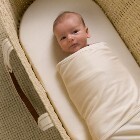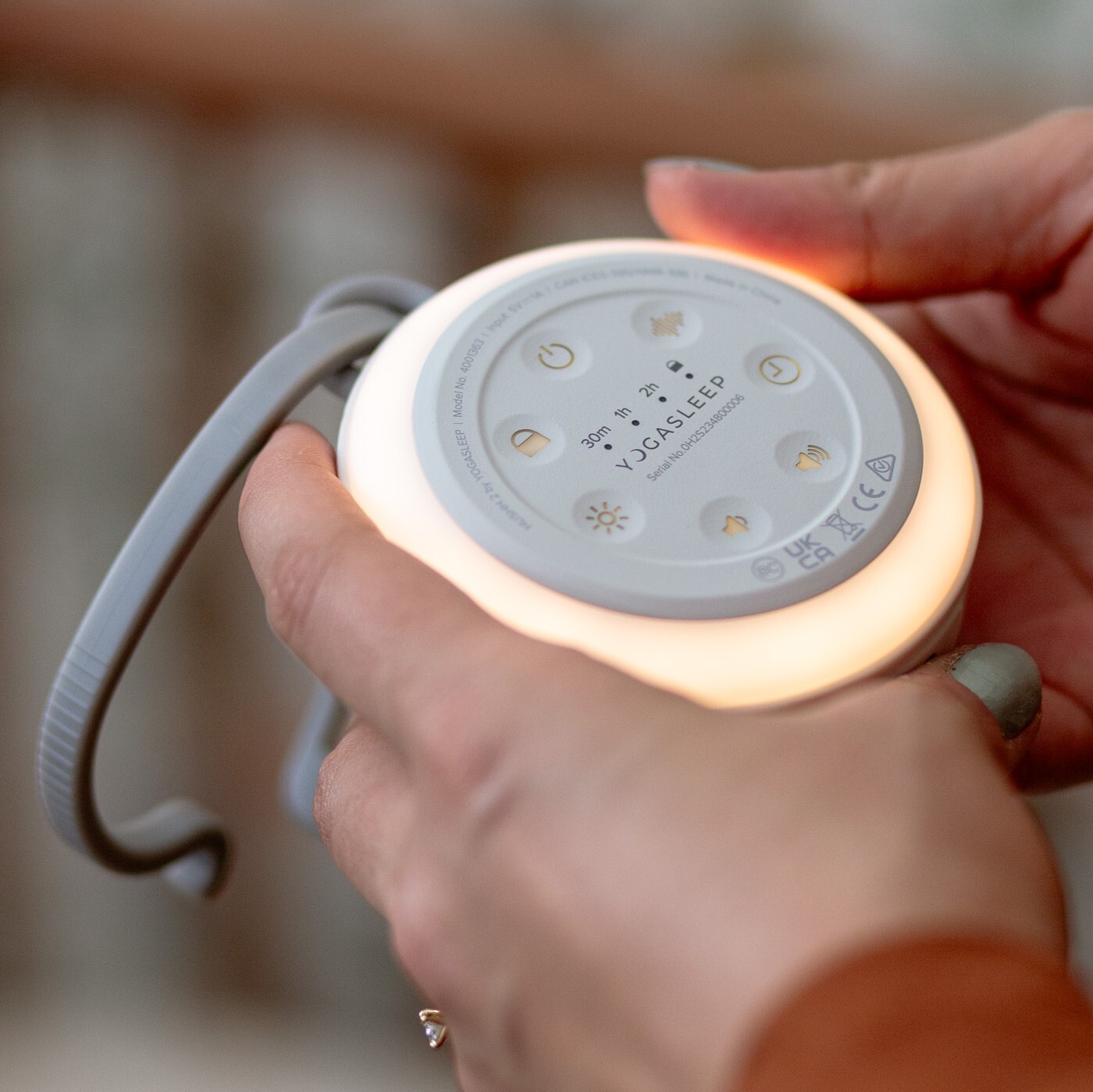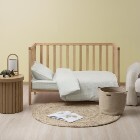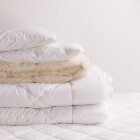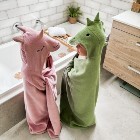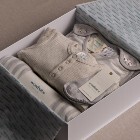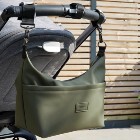There’s so much to learn, so quickly when you’re a new parent and how to bath your newborn is just another thing to tick off the list. Their tiny size and delicate, slippery skin, combined with the logistics of a bath can make it tricky. However, with a little bit of preparation and a few very helpful tools, bathtime can become the highlight of your day.
How to Bath a Newborn Baby: A Guide for First-Time Parents
When should I give my newborn their first bath?
Most parents will bathe their baby within 48 hours of birth, however there’s no absolute rule of when you should start to bathe your baby. A baby can’t regulate their temperature well, so they can quickly get cold whilst having a bath. And because they don’t really get dirty, there’s no need to bathe them every day - every second or third day is enough. Bathing your baby less frequently allows their natural skin oils to be retained and the protective vernix on a newborn’s skin to remain intact. Your newborn baby will still have their umbilical cord stump, so a simple sponge bath of their hands, face and bottom will suffice until it falls off (usually within 1-3 weeks). After that, you can transition to a full bath more frequently.
Where should I bathe my newborn?
Where you choose to bathe your baby is a personal choice and will likely be influenced by your home and who is available to help. For the first few baths, you may want to use two sets of hands as you get used to handling your baby in the water. For a newborn baby, a specific baby bath will make it easier as they are smaller than a large bathtub and don’t require as much water to fill. Plus, it’s easier for you to maneuver around the bath to support your baby as needed. Baby baths are smaller and more portable so you can give your baby their bath somewhere warmer, for example the kitchen or lounge which will reduce the risk of your baby getting cold quickly. Of course, you can also bath your baby in the bathroom or kitchen sink whilst they are little.
When should I bathe my newborn?
In the very first weeks after a baby's birth, most parents will simply bathe their baby at the most convenient time, usually when it’s a little warmer or when there’s an extra pair of hands around. Once your baby is older or when one parent has returned to work, most parents will bring bathtime into the evening and incorporate it into the bedtime routine. This helps signal to your baby that bedtime is coming and is a lovely way for the working parent to bond with your baby before bed.
How do I hold my newborn in the bath?
It is essential to always hold your baby in the bath as they can drown quickly if left unattended. Newborn baby’s are delicate and can be slippery to hold in the bath so getting your technique right is key. Use two hands to gently place your baby in the bath and lift them out again. A good way of holding your baby in the bath is to have your arm across the top of your baby’s back, neck and shoulders to support their head, whilst you’re holding the arm that is furthest away from you. You can then use your free hand for washing or gently splashing water over their tummy.
What do I need for bathtime?
Be fully prepared for bathtime so that when your baby is in the water everything is in reach. Never leave your baby unattended, even for a second and always have at least one hand supporting your baby in the water. Here’s what you’ll need:
- A baby bath (if you’re choosing to use one)
- A soft washcloth
- A soft hooded towel
- A clean nappy and outfit
- A cup for rinsing (optional)
- Cotton pads (optional for wiping eyes and face - a soft washcloth also works)
- Bath Thermometer (optional)
Setting up the Bath
If you can, choose a warm, draft-free room for your baby’s bath. This may be the lounge or kitchen. Fill the baby bath or clean basin with water, up to about 10cm of warm water should be plenty depending on the shape of your tub. Use your wrist or elbow to test the temperature—it should feel warm but not hot. Baby’s can get cold fast if they’re wet, so If you’re unsure about the water temperature use a specific bath thermometer. Aim for a temperature of around 37-38 degrees Celsius.
When setting up the bath, choose a height that’s appropriate. If you have a bad back or have had a cesarean and can’t lift heavy weights, the kitchen sink or basin may work best initially. Alternatively a bath with a stand could be a good option as this can be easily moved when empty and is usually at an ergonomic height. You can use a bucket to fill up the bath rather than lifting the heavy tub.
Wherever you set up the bath, make sure there’s enough space for all the accessories you’ll need and ample room to dry and dress the baby after their bath.
How to Give a Newborn a Sponge Bath
- Lay your newborn on a flat, padded surface such as a change pad. Use a towel underneath and keep your baby wrapped in another towel, exposing only the area you’re washing.
- Start with your newborn's face. Use a damp cotton pad or washcloth with plain water. Wipe each eye from the inner corner to the outer edge using a separate pad for each eye or rinsing the wash cloth in between eyes.
- Clean the rest of their face and neck. Gently wipe around the nose, mouth, and behind the ears.
- Wash their body. Gently wash the arms, hands, chest, and legs, paying attention to folds. Warm water is all your newborn baby needs, you can add soaps when the baby is older.
- Wash baby's bottom last. Wash their bottom last to avoid spreading germs from the nappy area to the face.
- Dry thoroughly, especially in the skin folds. Pat your baby dry, rather than rub. Dress your baby as soon as you can in a clean nappy and clothes.
How to Give a Newborn a Tub Bath
Depending on how fussy your newborn is, you may want to adapt this routine slightly, by washing your baby’s face and head first, before they are in the bath. You can then proceed with the remaining routine whilst they are in the bath.
- Get everything you need and ensure it’s within arm’s reach of the bath.
- Remove any rings, watches or jewellery from yourself which could scratch baby’s skin
- Support your newborn. Gently lower your baby into the tub feet first, supporting the head and neck at all times. As above, if your baby is fussy, wash their head and face whilst wrapped in a towel, before you put their body in the bath.
- Keep one hand on your baby, always supporting their head. Use the other to gently bathe them with water using a soft washcloth.
- Start with the cleanest areas first. As with the sponge bath, begin by wiping baby’s eyes, followed by their face and work your way down to their bottom.
- Rinse gently and remove your newborn from the tub using a firm, two-handed hold.
- Wrap in a towel immediately and pat dry. Take care to adequately dry under your baby’s arms, the groin or where any skin folds are, as damp skin can cause infection. Dress your baby quickly once they are dry as they tend to get cold quickly.
- Baby Massage. Giving your baby a massage post bath offers many benefits; improved bonding, better sleep and stress reduction. Make sure you’re in a warm area or wrap your baby in a towel and only expose the areas you’re massaging to ensure your baby doesn’t get cold.
Important Safety Tips
- Never leave your baby unattended. Not even for a moment to grab a towel or answer the phone.
- Avoid using too much water. Just 5-10cm in the bath is enough.
- Check water temperature carefully. Babies’ skin is sensitive and burns easily. If in doubt use a bath thermometer.
- Don’t bathe your baby every day. 2–3 times per week is sufficient when your baby is tiny. Daily bathing can dry out their skin.
- Keep the room warm. Newborns can lose body heat quickly as they can’t regulate their temperature well.
- Always support the head and neck. Newborn baby's have little control in the early weeks.
My baby hates the bath - what can I do?
It can be a bit of a surprise when your baby cries through bathtime! However, not all babies like it initially so here’s a few ideas to help keep your baby calm:
- Feed your newborn before and after their bath, taking care to burp them before the bath
- Try bathing them in two stages - First wash their head and face out of the bath, whilst wrapped in a towel, then bathe the rest of their body so they spend less time in the water.
- Bathe your newborn less frequently, every 2-3 days, opt for a sponge bath in between
- Place a washcloth over their tummy whilst in the bath and keep the warm water over their belly
- Give baby their bath earlier in the day to ensure they’re not overtired
- Bathe your baby with a parent in the bath with them
- Try a shower with a parent, so your baby remains skin to skin at all times and benefits from your warmth & security. Make sure the water is warm, not too hot, and keep the pouring water away from the baby's face as they’re unlikely to enjoy a face full of water!
Should I use soap in my baby’s bath?
Water is best for newborn babies because soaps can irritate & dry out the skin. If you do want to use something, a natural oil like olive oil or almond oil can be used. You can start using a mild, fragrance-free wash from about 6 weeks old, however water is just fine for the first few months. Save the bubbles for when your baby is older and will play in the bath!
And Finally...
Bathing a newborn may seem intimidating at first, but it becomes easier with practice and as your baby grows. It’s a wonderful opportunity to bond with your baby. Speaking or singing to your baby during the bath can help keep them calm and reassured. Most importantly, go at your own pace—there’s no rush, and like all things in parenting, confidence grows with experience.


